This Is KCSB
Inside Santa Barbara’s Only Free-Form Radio Station at 50 Years Old
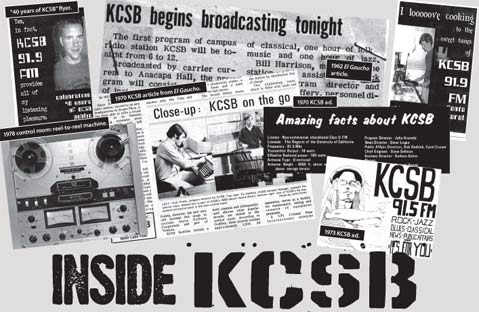
Monday, 6:27 a.m.: an extended set of Christian arena rock.
Tuesday, 1:14 p.m.: a double helping of tracks from “freak folk” duo CocoRosie.
Wednesday, 8:34 a.m.: a discussion of the bombings of Hiroshima and Nagasaki.
Thursday, 2:57 a.m.: “F the CC,” an impassioned cri de coeur from singer/songwriter Steve Earle against the government body that oversees broadcasting.
Friday, 3:06 p.m.: the middle of a stream of pure, unadulterated noise from around the world.
Saturday, 8:45 a.m.: a read-aloud session of little-known children’s stories.
Sunday, 2:15 p.m.: Roberta Flack and Donny Hathaway’s “The Closer I Get to You.”
You’re tuned in to KCSB, 91.9 FM in Santa Barbara.
Don’t like any of that stuff? Come back in a couple of hours, and you’ll hear something completely different. That’s the beauty of KCSB, one of the few remaining free-form radio stations in the United States. In an age when turning on your radio usually means dipping into deadeningly undifferentiated streams of featureless popular music or repetitive political harangue, KCSB offers actual programs. Original programs. Eccentric programs. Programs crafted with care by broadcasters of all sensibilities, from all walks of life, all of whom have great enthusiasm for the medium and its possibilities.
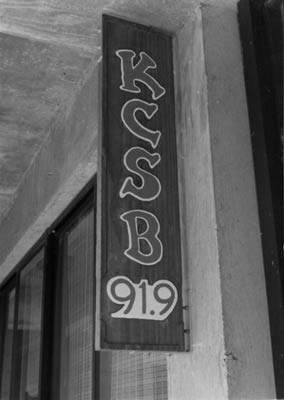
Even in just my six years as a KCSBer, I’ve seen — and more importantly, heard — an impressive burst of creative energy at the station. The deejays are trying out more brave new experiments in radio than ever, and there’s more of a push to integrate KCSB into the community at large. It’s even built bridges with other Santa Barbara media institutions, including The Independent, which publishes my weekly column, The KCSBeat, online at independent.com, and broadcasts Poodle Radio to the masses every Tuesday morning on 91.9 FM.
Yet this is less a sudden, isolated leap forward for the station than a continuation of a tradition. Next year, KCSB will celebrate half a century on the air. The countless programmers and staff members who have passed through its studios during all 50 years have always experimented, always ventured into new broadcast territory, and, most importantly, always had — and offered — a great time on the air.
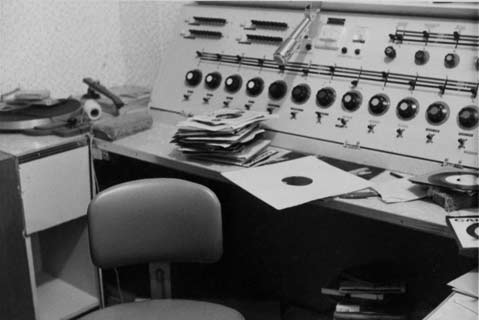
The Making of a Station
Humble beginnings are a cliché, sure, but beginnings don’t come much humbler than KCSB’s — or, rather, Radio Navajo’s. That’s how the station was known when it started in 1961, back when it maintained its entire administrative, managerial, and technical operation in a corner of UCSB’s Navajo hall in the Anacapa dorms. This embryonic KCSB offered a mere four hours of daily programming on an AM “carrier current,” a means of low-power broadcasting that distributed the signal through existing electrical wiring. By 1962, the station’s pop, classical, and jazz music, recorded lectures, sports coverage, and faculty interviews reached the other residence halls and campus coffee shop.
The FCC issued KCSB a Class D educational FM broadcasting license in 1963. With a two-watt, 91.9-megacycle signal reaching Isla Vista, KCSB became the first licensed station in the entire University of California system. A brand new 10-watt transmitter installed in September 1965 allowed the residents of Montecito and Santa Barbara to hear KCSB’s expanded offerings of comedy, drama, and on-the-spot Isla Vista news. This last element would assume critical importance in 1970, the year of Isla Vista’s three well-known riots. One resulted in a burnt-down Bank of America branch, and another actually saw KCSB’s broadcasting temporarily shut down by the Santa Barbara Sheriff’s Department.
Undaunted, KCSB seized the rest of the 1970s as an opportunity to expand. The very same month it endured the three-hour shutdown at the hands of the law, it stepped up its power 18-fold with a 180-watt transmitter. With the first directional FM antenna ever used by a radio station, KCSB made new listeners out of Santa Marians to the north and Venturans to the south, opening up a potential audience of more than 150,000, surely an unthinkable number back in the Radio Navajo days. With 50 licensed broadcasters putting in shifts 24/7, KCSB implemented morning, afternoon, and evening regional news reports daily. Its sports department started broadcasting live from big-time basketball games and dorm pushcart races alike.
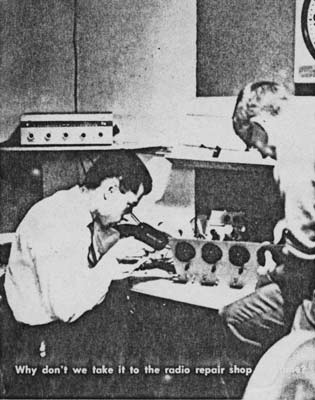
In 1973, the California Intercollegiate Press Association named KCSB the best news station on a California college campus. Stereo broadcasting, long hoped for and perennially proposed, finally became a reality in 1975. As the 1970s ended, so did work on a new control room with fresh turntables and a state-of-the-art cartridge rack, and a much-improved mixing console. Thus equipped, KCSB marched proudly into the 1980s as one of the vanishingly few college-grown American independent radio stations to survive the previous 20 years without succumbing to the generic “rock” format then sweeping the nation.
Many KCSBers, UCSB students and non-students alike, have gone on to longer broadcasting careers elsewhere. One of the most controversial, 28-year-old Sean Hannity, showed up in 1989. “I wasn’t good at it,” he once admitted of his time at KCSB, during an interview on CBS’s The Early Show. “I was terrible.” He didn’t stick around the station long enough to improve there, having departed after a war of words about potentially homophobic remarks uttered on the air by (depending on whose story you believe) him, by one of his guests, or both. A station that would shortly go on to join Grassroots Radio Coalition would seem to be an odd place to launch one’s career in high-profile conservative punditry, but KCSB is a place of surprises.
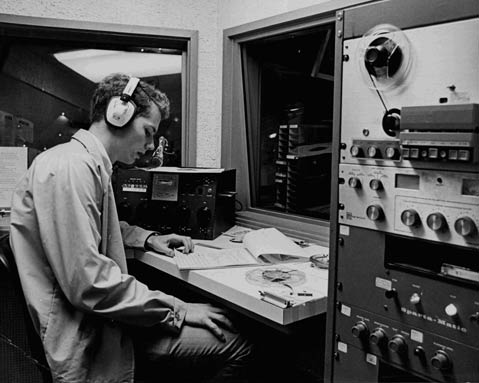
A 1989 increase in student-provided funding, plus a contract allowing a cell phone service provider to share KCSB’s broadcasting tower, allowed the station to ride the 1990s’ wave of technology. It built up a CD library, dumped the cartridge rack, and installed a new digital audio system that united all the station’s studios. It gained a Web site in 1995 and began offering streaming broadcasts around the world by 2000. A decade of new gear, new Web features (including programs listenable on demand), and new ideas later, KCSB continues to pursue its free-form mandate more capably than ever.
“The people who participate determine our content, never markets,” said Elizabeth Robinson, KCSB’s staff advisor and producer of both No Alibis and Third World News Report. “What becomes increasingly important is that we remain a petri dish for media criticism and media democracy. By doing radio, we examine the world of media we’re exposed to and imagine another.”
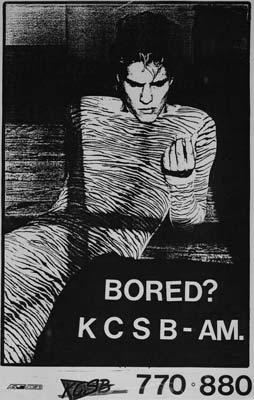
Development coordinator Ted Coe expressed optimism about technology’s effect on the station’s mission as an “ongoing skill-sharing project.” “I’d like technological changes to make listeners more comfortable navigating the diversity of our programming,” he said. “It all helps to let people know we exist, that we’re accessible as a local, human consciousness. I’d like people to realize they can find out about things in the community through us and participate in so many ways.”
Chief engineer Bryan Brown emphasized his hope that KCSB can keep broadening its mandate, doing quality work while enriching Santa Barbara’s relationship with public, regional, and community media. As Dave from the Grave, KCSB’s best known and most devoted listener, put it, “The station’s like a family, but it’s always changing. It’s never the same thing all the time.”



